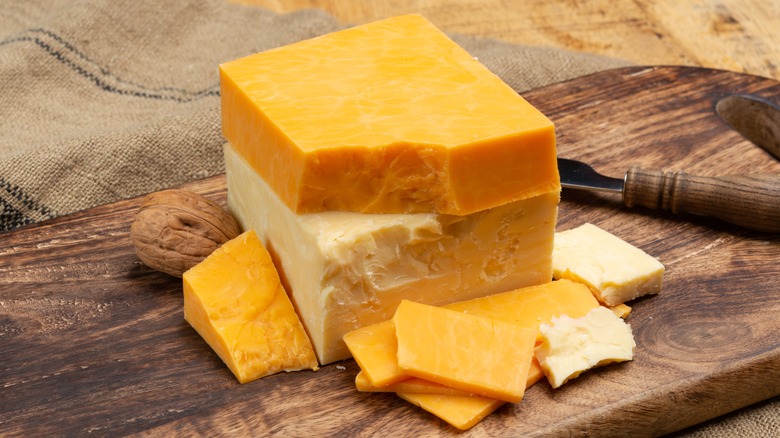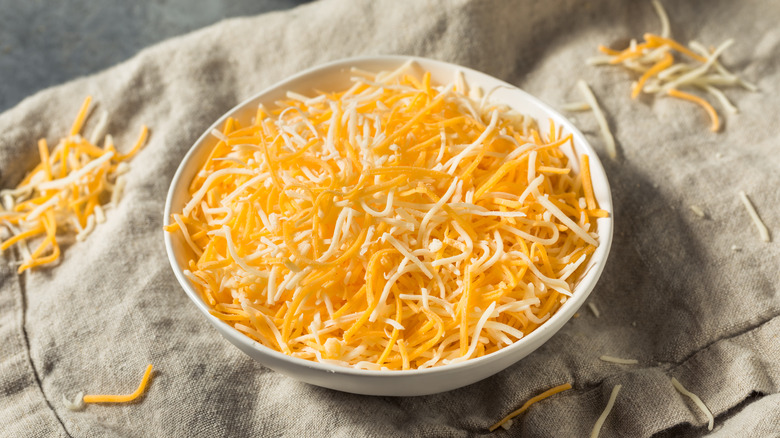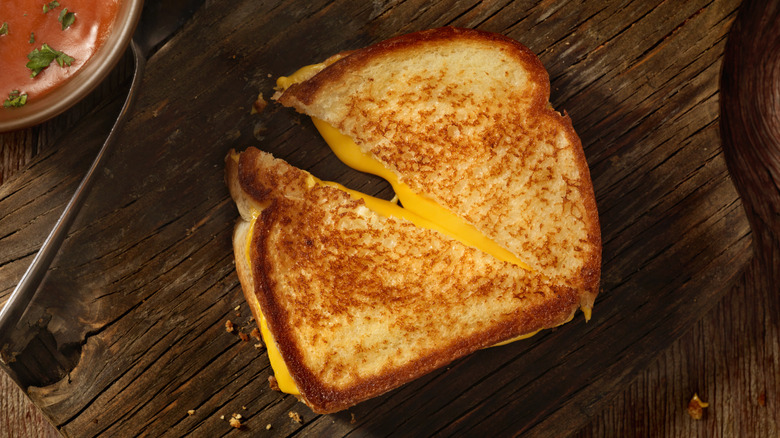What Gives Cheddar Cheese Its Iconic Orange Hue?
A quick survey of the dairy department in any supermarket will reveal that there are quite a few kinds of cheeses labeled as 'cheddar' and that they range in color from creamy white to vibrant orange. If you have ever wondered what accounts for this diversity of hues, there is a simple answer: annatto. Check the ingredient list printed on the packaging of an orange chunk of cheddar, and you're bound to find this word there.
Annatto is a plant-based product that is used as a food dye in a variety of foods, including cheddar, as well as other types of dairy and some baked goods. It is made from the seeds of the achiote tree, which is found in South and Central America, and can be transformed into an essential oil, paste, or powder. Annatto presents as pale yellow when used in small amounts or a deep red when larger quantities are incorporated. It's no coincidence if you notice that certain cheddars have the same color as a standard carrot — the orange hue in annatto derives from pigments known as carotenoids, which are also found in these root vegetables.
Why annatto is added to cheddar
In the past, the color of cheese was an indicator of quality. Blocks of dairy that were tinted yellowish-orange came from cows that grazed on beta-carotene-rich grass. It was in the United Kingdom — a country known for its grassy, lush landscapes and home to Cheddar Village, the namesake town where this particular cheese got its start in the 12th century — where cheesemakers discovered that this color could be faked.
This realization was motivated by a moneymaking scheme. The cheesemakers had found out that if they skimmed the cream off their milk, they could profit from selling two separate products — cream or butter on its own and low-fat cheese — instead of one. But since the pigment from the grass was stored mostly in the fatty layer of cream, the cheese made from the leftover milk was pale. To feign the appearance of the high-quality, full-fat, deeply delicious cheese that they used to make, the cheesemakers experimented with different ingredients, including saffron and carrot juice, before finally settling on annatto.
With the introduction of food dyes, color is no longer a reliable way of gauging whether or not a cheese is good. The addition of annatto to cheddar has a minimal effect on quality in terms of characteristics such as taste or nutrition, so whether you choose to embrace or avoid it is above all a matter of personal preference.
What to do with a big chunk of cheddar
White or orange, grated or solid, cheddar cheese is an extremely versatile ingredient that can add a rich flavor and creamy texture to a wide range of dishes. Given its high moisture and fat content, cheddar has an ideal melting point for creating a perfectly gooey cheese pull.
The velvety, elastic quality of this particular dairy makes it ideal for making the best grilled cheese. But its buttery taste also lends well for pairing with both sweet and salty ingredients, so while you can opt to keep it classic, you should also feel free to explore your culinary creativity. For an easy way to level up your lunch, keep in mind that apple and cheddar are a match made in sandwich heaven. Throw on a couple apple slices — or your other favorite fresh fruit, such as figs or pears — to contrast the robust flavor of the dairy with something light, sweet, and juicy. It also goes beautifully in a pimento cheese dip with a side of celery or crisped toast rounds.



